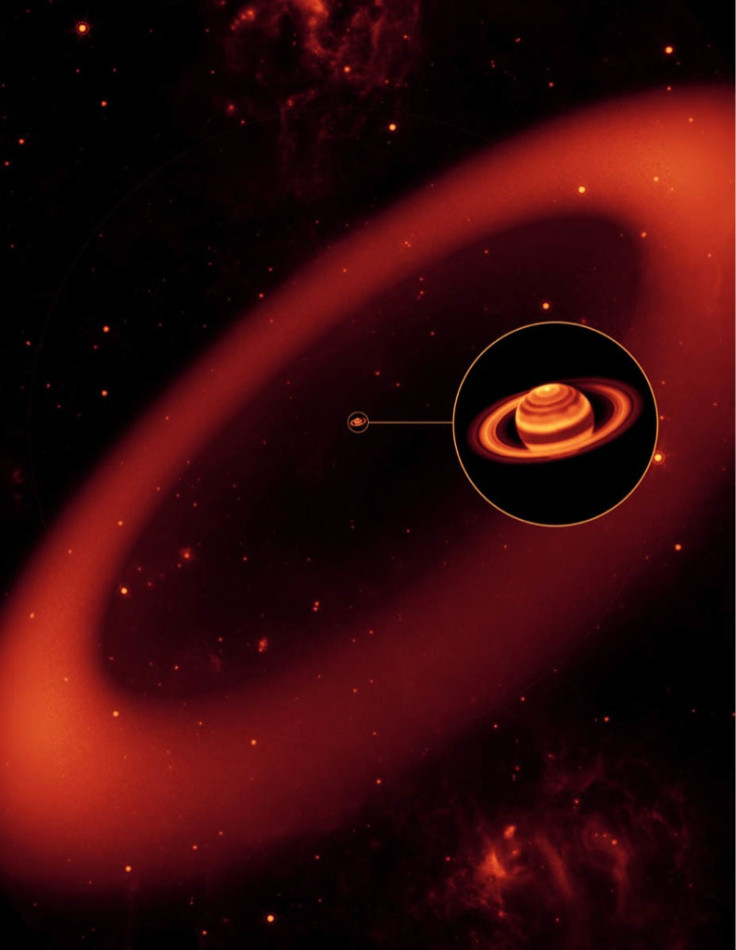Saturn's mysterious outermost ring just got bigger and emptier

Saturn's outermost ring is even bigger and emptier than believed. It is nearly 300 times the radius of the planet it orbits, spanning an area 7,000 times larger than Saturn itself, says a new study.
The mysterious Phoebe ring was earlier believed to extend 7.7 million to 12.4 million kms from the planet. New observations by Nasa's Wise spacecraft place the span between six million and 16.2 million kms, an increase by 30%.
The new estimates too are conservative and the ring span could be more, say researchers from the University of Maryland.
"Nobody expected planetary rings to ever be this large," says lead author Douglas Hamilton, who notes that most of the ring is made of small dust grains ranging from millimetre to centimetres.
Larger rocks, between fist and soccer-ball-sized, only make up around 10% or less of the ring's total composition.
Saturn's largest ring called the Phoebe ring was originally discovered by Hamilton and colleagues in 2009, named after the Saturnian moon Phoebe, believed to be the source of the particles that make up the ring.
Nasa's infrared Spitzer Space Telescope first detected the Phoebe ring extending between distances of 128 to 207 times the radius of Saturn from the planet.
New measurements using the Wise spacecraft have increased its size by 30% to a distant 270 times the radius of Saturn, writes Space.com.
Tiny and old particles
Unlike the other rings of Saturn which house particles as big as a house, this one is made of very tiny particles suspected to arise from the moons themselves.
Hidden moons besides Phoebe and Iapetus, too small to see, could be adding dust to this ring when lashed by passing comets
However, because the ring is so large, individual particles do not collide very often so this means the ring could be very old, says Hamilton.
"Most of these particles can last for millions to billions of years because there's so much space and so few particles, and they're moving so slowly that the collision rate is so slow."
Besides being big, the Phoebe ring is tilted, and probably orbits backward and is largely empty space.
Saturn's E ring is made of much tinier frozen water droplets from geysers on the icy moon Enceladus. These can last maybe a century or so before they strike another moon of Saturn or get blown away from the gas giant's orbit entirely.
The first hint that Saturn had this secret ring came back in 1671, when the Italian astronomer Giovanni Domenico Cassini looked through a telescope and discovered the moon now known as Iapetus.
The strange looking little moon was black on one side and white on the other.
Scientists suspected that Iapetus is ploughing through a ring of dark material. But the latest study suggests the moon is locked to show the same face to the planet. The other face is turned black by the dust from the Phoebe ring.
When small particles are lost from the Phoebe ring, they move inwards towards Saturn until they cross the orbit of the neighbouring Saturnian moon Iapetus.
In fact it was a study of Iapetus, the strange moon of the sixth planet from the Sun that led to the present discovery.
© Copyright IBTimes 2025. All rights reserved.





















